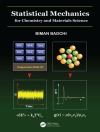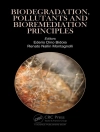In the 1950s the direct observation of dislocations became possible, stimulat- ing the interest of many research workers in the dynamics of dislocations. This led to major contributions to the understanding of the plasticity of various crys- talline materials. During this time the study of metals and alloys of fcc and hcp structures developed remarkably. In particular, the discovery of the so-called in- ertial effect caused by the electron and phonon frictional forces greatly influenced the quantitative understanding of the strength of these metallic materials. Statis- tical studies of dislocations moving through random arrays of point obstacles played an important role in the above advances. These topics are described in Chaps. 2-4. Metals and alloys with bcc structure have large Peierls forces compared to those with fcc structure. The reasons for the delay in studying substances with bcc structure were mostly difficulties connected with the purification techniques and with microscopic studies of the dislocation core. In the 1970s, these difficulties were largely overcome by developments in experimental techniques and computer physics. Studies of dislocations in ionic and covalent bonding materials with large Peierls forces provided infonnation about the core structures of dislocations and their electronic interactions with charged particles. These are the main subjects in Chaps. 5-7.
Taira Suzuki & Shin Takeuchi
Dislocation Dynamics and Plasticity [PDF ebook]
Dislocation Dynamics and Plasticity [PDF ebook]
قم بشراء هذا الكتاب الإلكتروني واحصل على كتاب آخر مجانًا!
لغة الإنجليزية ● شكل PDF ● ISBN 9783642757747 ● الناشر Springer Berlin Heidelberg ● نشرت 2013 ● للتحميل 3 مرات ● دقة EUR ● هوية شخصية 6332401 ● حماية النسخ Adobe DRM
يتطلب قارئ الكتاب الاليكتروني قادرة DRM












